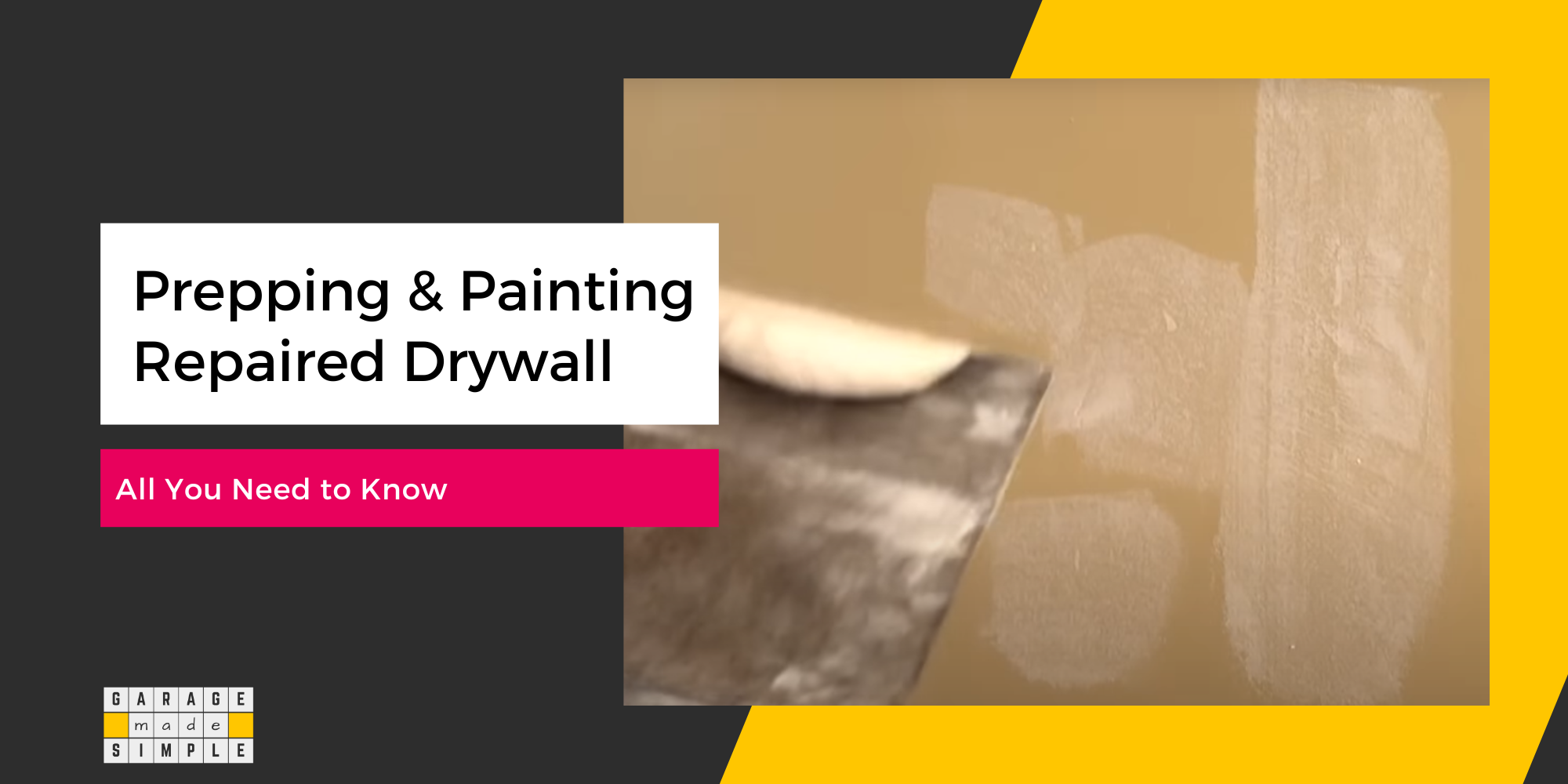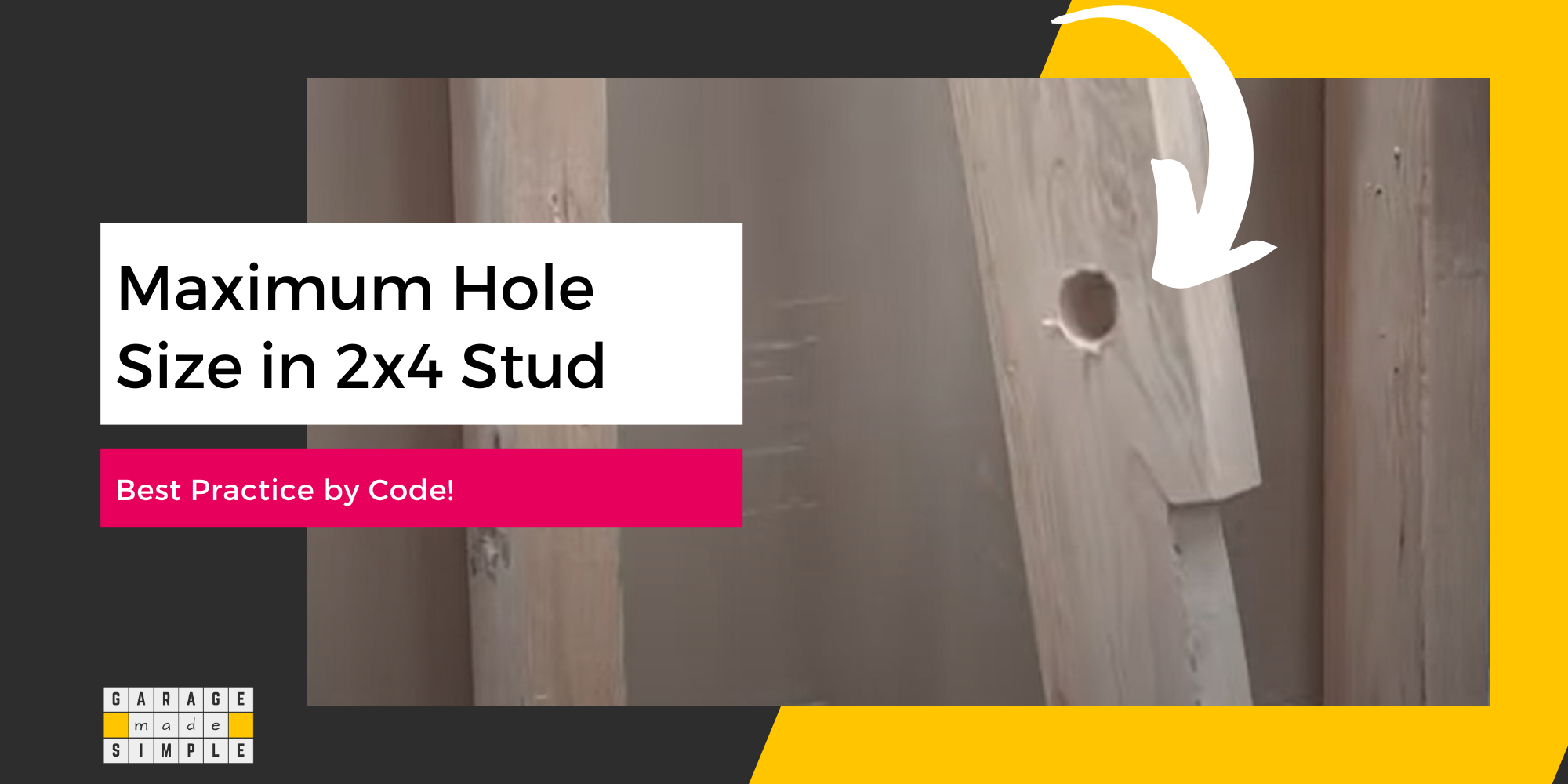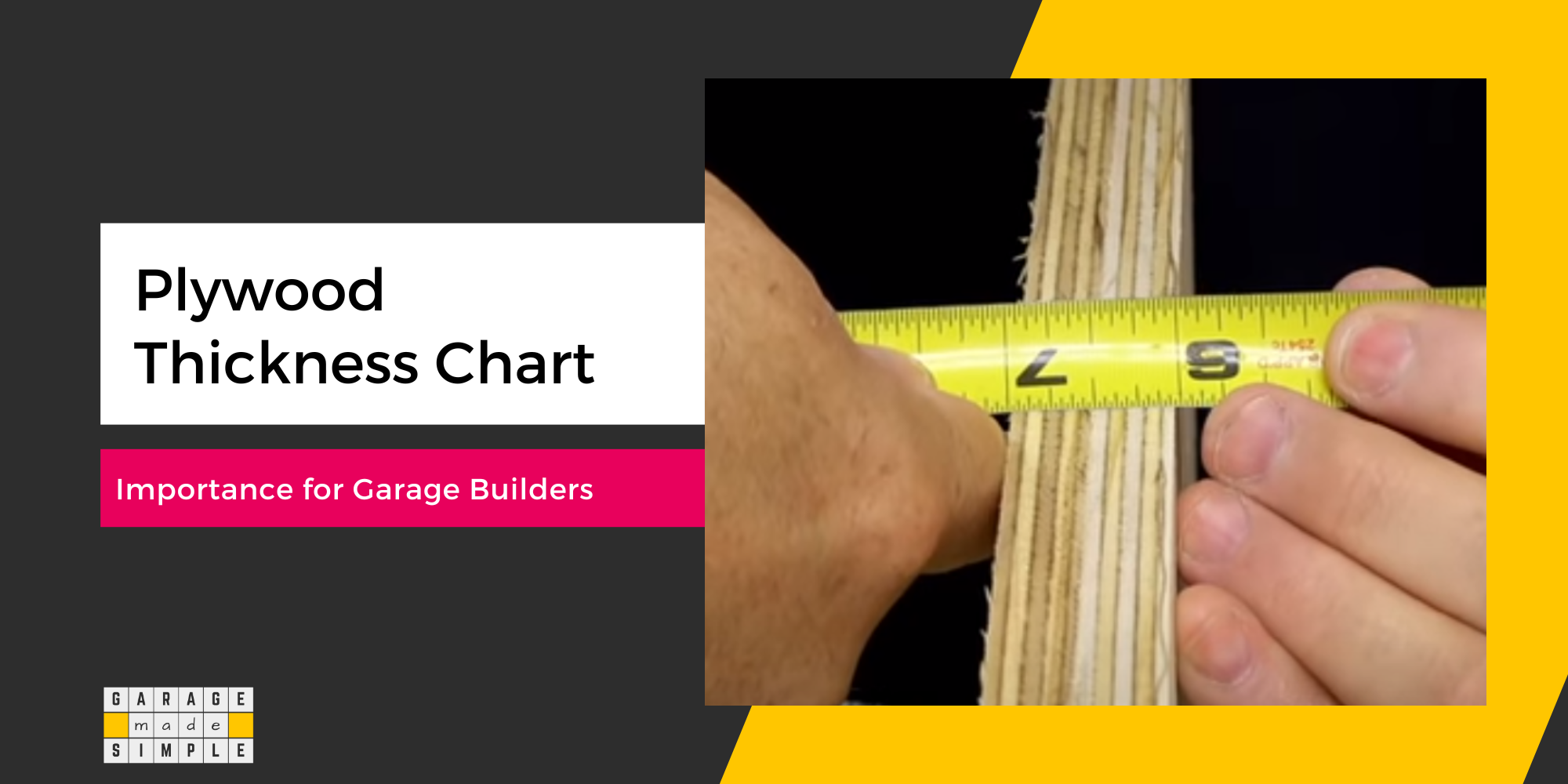OSB or Drywall for Garage Walls? What is Really Better?
As an Amazon Associate, I earn from qualifying purchases.
Should I Use OSB or Drywall in My Garage?
Drywall is very popular as a sheathing material for garage interior walls. However, OSB has been gaining greater acceptance as wall sheathing for certain types of buildings. OSB can also be used in a garage but should you use OSB or drywall for your garage walls?
Drywall is an excellent choice for an attached garage as it is fire resistant and code compliant. In addition it is pest resistant, easy to install and budget friendly. OSB is more suitable for a detached garage, where its better water resistance and higher impact & shear strength is a definite advantage.
Ultimately, the decision between using OSB or drywall for your garage walls depends on your specific requirements. The important quality parameters that you should consider while making your choice are:
- Fire Resistance & Code Compliance
- Impact & Shear Resistance and overall Strength
- Water, Pest, Mold Resistance and Durability
- Ease & Cost of Installation
In this post I briefly explain how OSB and drywall are manufactured. I also compare them on the above quality parameters.
The infographic below summarizes the comparison between OSB and drywall. Use that as a quick reference and read the entire article for in-depth understanding. It will help you make an informed choice.
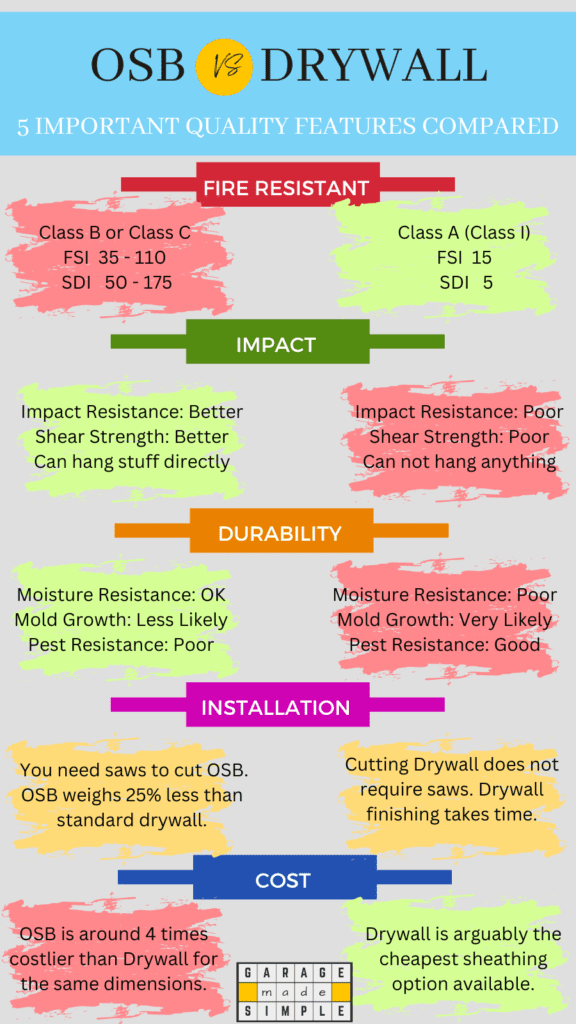
What Is the Difference Between OSB and Drywall?
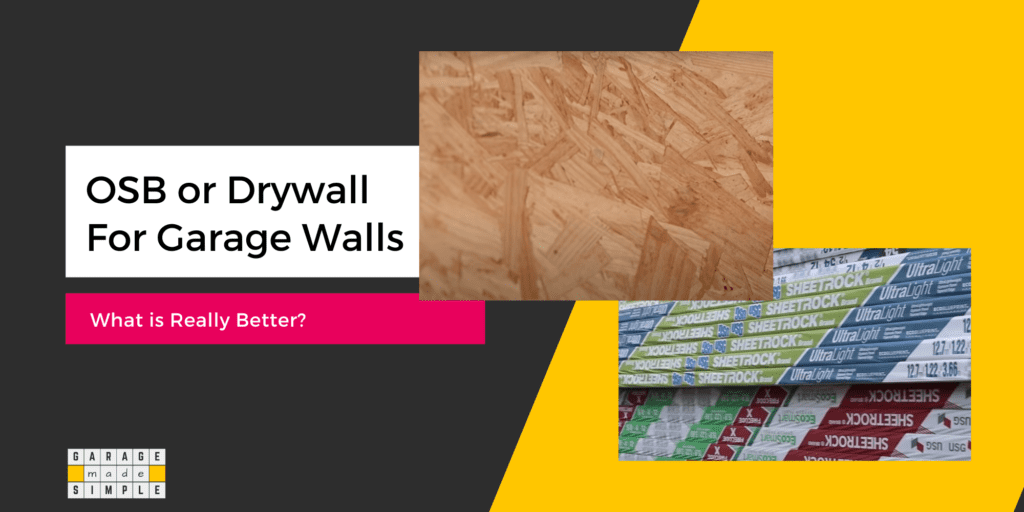
What is OSB & How is it Made?
OSB, short for Oriented Strand Board, is an engineered wood. It is designed to be a sheathing material and is available as boards of various thicknesses.
OSB is manufactured from rectangular wood strands. The strands are arranged randomly in cross-oriented layers. The strands are mixed with specialty resins and laid out in thick mats. High heat and pressure is used to bond all of it into OSB.
What is Drywall & How is it Made?
Drywall is made from powdered gypsum that is sandwiched between two layers of paper.
Gypsum is a naturally occurring soft mineral composed of calcium sulfate dihydrate. Gypsum is readily available all over the world and is widely mined for use as a building material.
To make drywall, gypsum is ground into a fine powder and mixed with water to create a slurry. The slurry is then spread out over a sheet of paper and covered with another sheet. Heat and pressure is used to bond it into Drywall.
Fire Resistance of OSB vs Drywall
Flame Spread Index (FSI) and Smoke Developed Index (SDI) as tested in accordance with ASTM E84 or UL723, is used as a measure of fire resistance of a building product.
Fire resistance is considered poor when FSI and SDI are high.
OSB Fire Resistance
The fire resistance of OSB is relatively low as it is an engineered wood product.
Oriented Strand Board (OSB) conforming to PS 2, have a flame spread index (FSI) in the range of 35 to 110 and a smoke-developed index (SDI) in the range of 50 and 175 when tested in accordance with ASTM E84.
Source: APA Technical Topics
OSB tends to get classified as Class B or Class C when tested in accordance with ASTM E84 or UL723.
Drywall Fire Resistance
Other than 2 sheets of thin paper, drywall is basically gypsum that is 50% water (by volume) in crystalline form.
This unique composition makes gypsum extremely fire resistant.
The temperature of the gypsum will not go beyond 212°F (100°C) till all the water has evaporated. And even after that gypsum will not catch fire.
Drywall (often referred to as Sheetrock) is classified as non-combustible when tested as per ASTM E136-19a.
SHEETROCK (Drywall) has a very low score (15 for flame spread index and 5 for smoke developed index). As such Drywall is classified as Class A (Class I) under IBC when tested in accordance with ASTM E84.
Drywall is a lot better than OSB for Garage Walls when it comes to Fire Resistance. Drywall complies to the 2021 International Residential Code (IRC).
Strength of OSB vs Drywall
Engineers quantify strength of building materials by measuring the load or stress it can withstand before failure. Following terminology is used depending on the load direction.
- Tensile Strength – Stretching or Pulling
- Compressive Strength – Loading or Crushing
- Flexural Strength – Bending
- Impact Resistance – Being Hit
- Shear Strength – Tearing or Cutting
- Torsional Strength – Twisting
Impact and Shear strength are usually more meaningful to you as a garage owner. High impact strength will allow the garage wall to handle hits from cars or other moving objects. High shear strength will let you hang heavy objects such as TV or Slatwall directly onto the sheathing.
OSB Impact & Shear Strength
OSB has a fairly high impact and shear strength. Using OSB on your garage walls will make it a lot easier for setting up a garage workshop. You can hang your garage tools, shelves or a slatwall directly on the wall. OSB is also convenient if you plan to store gardening or outdoor activity equipment.
With OSB on your garage wall you can be less worried about parking errors. Minor hits will not damage OSB.
Drywall Impact & Shear Strength
Drywall is woefully disappointing when it comes to impact resistance. It will get nicks and cuts pretty easily. You could even punch a hole through it with a hard hit.
Drywall also has extremely poor shear strength. You have to therefore hang everything from the garage wall studs. Drywall can hardly take any load.
OSB should be your choice if the strength of the garage wall is quite important to you.
Durability of OSB vs Drywall
The durability of OSB or Drywall is reduced by
- Moisture Absorption
- Mold & Mildew Growth
- Pest Attacks
Moisture Absorption by OSB
OSB is not very moisture-resistant. OSB absorbs moisture fairly easily when exposed to high levels of humidity or water. OSB is also slow to release absorbed water. High moisture content in the garage can lead to OSB swelling, warping, or losing structural integrity.
The longer the water stays, higher are the chances of OSB rotting.
Moisture Absorption by Drywall
Drywall absorbs moisture even more readily than OSB as it is porous. Not only does drywall get wet, the water wicks up so that sections that are not even immersed in water get wet too.
This can cause the drywall to become soft, weak and significantly reduce its structural integrity. Wet drywall is prone to disintegration. It is not unusual for wet drywall to just crumble under even a very slight impact or pressure.
You can prevent this by having a good garage floor drain system. Another way to prevent such mishaps is to use wainscoting panels or garage floor trim.
Moreover, mold and mildew can grow on moist drywall. To prevent mold growth you must use mold resistant drywall.
Mold & Mildew Growth
The garage will get the unmistakable musty smell of growth of mold & mildew if the walls have been damp for a while.
Since Drywall absorbs moisture easily and retains it for longer periods, it is more likely to promote mold & mildew growth, as compared to OSB.
Pest Attack
OSB being wood based can be attacked by pests such as termites and carpenter ants.
Drywall, however, is pretty much impervious to attacks from all kinds of pests, because it is basically almost totally gypsum. There is no organic matter, other than the thin paper films, that pests can feed on.
In dry climates Drywall is more durable than OSB. However, in wet climates OSB would be a better choice as it has higher water resistance.
Ease & Cost of Installation: OSB vs Drywall
Ease of Cutting
You need very few tools and little expertise to cut drywall boards. All you will need is:
- A straight edge or a T-square: This will help you draw a straight, clean line on the drywall.
- A utility knife: This will be used to score the drywall along the cut line.
- A keyhole saw: This is a small, handheld saw that is perfect for cutting through drywall.
The utility knife will not help you cut OSB the way you can cut drywall. You need to use a circular saw, jigsaw, or handsaw to cut OSB. It needs a lot more expertise.
Weight Comparison
A 5/8″ sheet of Drywall (4’X8’) typically weighs around 74 pounds. On the other hand, A typical 4’ x 8’ sheet of 1/2-inch OSB weighs around 54 pounds. As OSB is around 25% lighter than drywall it is easier to install.
Cost Comparison
The price of construction material can vary on demand and availability as well as the location. You can use a ½” thick OSB board as an alternative to a ⅝” thick drywall board as OSB has higher strength.
In spite of that OSB tends to be more expensive than drywall. Drywall is probably the cheapest sheathing material for a garage.
Overall, drywall scores over OSB for ease & cost of installation.
Bottom Line
When it comes to choosing OSB or Drywall for your garage walls keep in mind
- OSB, unless specially treated is not fire resistant or code compliant. Drywall is.
- OSB is much stronger than drywall, especially for impact & shear strength that are important in a garage.
- OSB is better than drywall in high humidity or wet conditions. However, it must be treated to protect it from attacks from wood eating insects, such as termite & carpenter ants.
- Drywall is cheaper and easier to install
So make your choice depending on your garage conditions and requirements.
Thank you very much for reading the post. I do hope you found it informative and useful.

